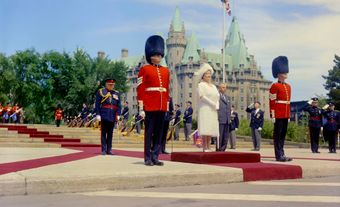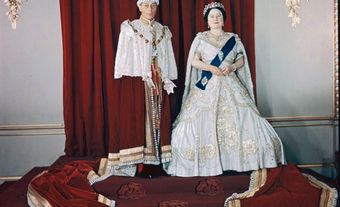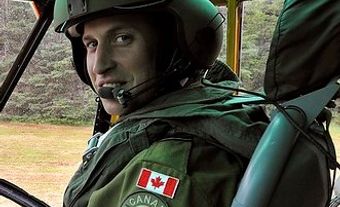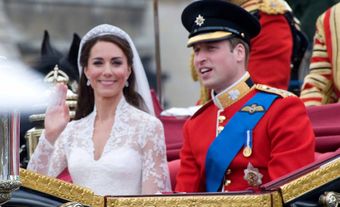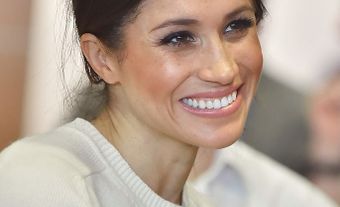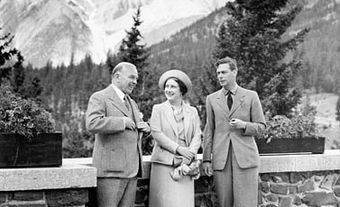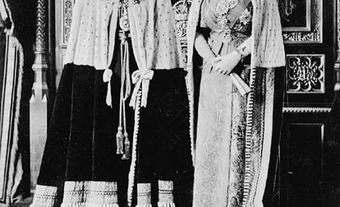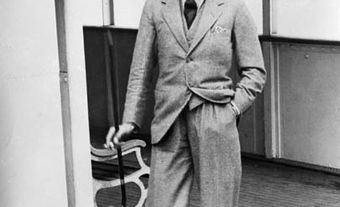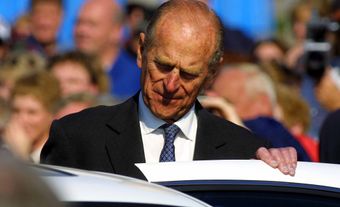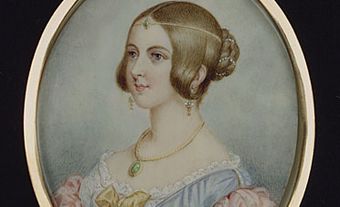Princess Margaret Rose (HRH The Princess Margaret, Countess of Snowdon) (born 21 August 1930 in Angus, United Kingdom; died 9 February 2002 in London, United Kingdom). Princess Margaret was the sister of the late Queen Elizabeth II and aunt of King Charles III. She served as colonel-in-chief of three Canadian military regiments and opened Princess Margaret Hospital in Toronto (now Princess Margaret Cancer Centre).

Early Life and Education
Margaret was born at Glamis Castle during the reign of her grandfather King George V, the younger of the two daughters of the future King George VI and Queen Elizabeth (née Lady Elizabeth Bowes-Lyon). Her mother was a member of the Scottish aristocracy and Margaret was the first princess to be born in Scotland since Queen Victoria’s granddaughter Victoria Eugenie of Battenberg, the future Queen of Spain, in 1887. In 1936, Margaret’s father became king following the death of his father and the abdication of his elder brother, King Edward VIII, and the family moved into Buckingham Palace.
Margaret and her elder sister, the future Queen Elizabeth II, were educated at home by a Scottish governess, Marion Crawford. Margaret received piano lessons and became an enthusiastic piano player, singer, and actress in amateur theatricals. She was known for her sense of humour and vivacious personality. Elizabeth and Margaret spent the Second World War at Windsor Castle, where they delivered a radio broadcast to the children of the British Empire and Commonwealth in 1940. Margaret accompanied her parents and sister on an official tour of South Africa in 1947.
The Accession of Queen Elizabeth II
On 6 February 1952, King George VI died in his sleep and Margaret’s elder sister succeeded to the throne as Queen Elizabeth II. Margaret and her mother, now Queen Elizabeth the Queen Mother, moved out of Buckingham Palace to Clarence House in London. Margaret was devastated by the death of her father and turned to her father’s equerry, Group Captain Peter Townsend, for comfort.
Peter Townsend
At Queen Elizabeth II’s coronation on 2 June 1953, a journalist observed Margaret removing a piece a fluff from Townsend’s jacket, prompting speculation about their relationship. Townsend was divorced and therefore not considered a suitable spouse for the Queen’s sister. Margaret was encouraged to delay her decision until she turned 25, and Townsend was stationed abroad. In 1955, Margaret decided not to marry Townsend and made an official statement, declaring that “mindful of the Church's teaching that Christian marriage is indissoluble, and conscious of my duty to the Commonwealth, I have resolved to put these considerations before any others."
Cultural Interests, Philanthropy, and the Princess Margaret Cancer Centre
Margaret was patron or president of more than 80 organizations in the United Kingdom and Commonwealth. Her philanthropic work focused on health care, children’s welfare and the arts. In 1957, she became the first president of the Royal Ballet in the United Kingdom. That same year, she received an honorary doctorate in music from the University of London. Margaret’s Canadian patronages included Princess Margaret Hospital (now the Princess Margaret Cancer Centre) in Toronto and the nearby Princess Margaret Lodge, where cancer patients from outside the city could stay during their treatment.

Royal Tours of Canada
Princess Margaret represented the Queen on royal tours throughout the Commonwealth and visited Canada on 10 occasions (in addition to a brief refuelling stop in Dorval on her way to Jamaica on her first solo Commonwealth tour in 1955). (See also 10 Memorable Royal Tours of Canada.)
During her 31-day tour of Canada in 1958, she celebrated British Columbia’s centennial, attended a performance of A Winter’s Tale at the Stratford Festival, visited Niagara Falls and attended a military review at Canadian Forces Base Gagetown, which included a simulated “atomic battle.” In 1967, she attended a fundraising ball for Princess Margaret Hospital in Toronto with her husband Antony Armstrong-Jones, then visited Expo 67 in Montreal. She visited Winnipeg twice in the 1970s with her husband, first to open the Winnipeg Art Gallery in 1971 and then to celebrate the city’s centennial in 1974.
In 1980, she visited Saskatchewan and Alberta to mark the 75th anniversary of each province’s entry into Confederation. She toured Ontario in 1981 and visited British Columbia for Expo 86 in 1986. In 1988, she marked the 75th anniversary of the Women’s Institutes of Nova Scotia in Canning. In the 1990s, she undertook two private working visits to Toronto, in support of Princess Margaret Hospital in 1993, and of the reopening of Princess Margaret Junior School in Etobicoke in 1996.
Margaret was colonel-in-chief of three Canadian military regiments: The Royal Highland Fusiliers of Canada (see also 31 Canadian Brigade Group), The Princess Louise Fusiliers (see also 36 Canadian Brigade Group) and The Royal Newfoundland Regiment.
John Turner
During her 1958 tour of Canada, Margaret met future prime minister John Turner at a ball on the naval base at Vancouver’s Deadman’s Island. The Toronto Telegram reported at the time, “Princess Margaret sat in the moonlight last night in an intimate tête-à-tête with a young bachelor lawyer … at a secluded table on the lawn of the HMCS Discovery naval base… Hardly anyone noticed the young couple as they chatted, laughed, sipped drinks and smoked cigarettes.” They danced together at a subsequent ball at Rideau Hall later in the tour. In a 1966 letter to a friend, Margaret stated, “I nearly married him.” Turner, however, was a Roman Catholic and members of the royal family could not marry Roman Catholics and retain their place in the line of succession at the time.
Margaret was mentioned at key moments in Turner’s later political career. During the 1984 federal election campaign, future prime minister Brian Mulroney quipped,“When I was driving a truck, John Turner was dancing with Princess Margaret.” In 1988, a spokesman for Turner as Leader of the Opposition denied that he had missed a key House of Commons vote on free trade because he was at a private dinner with “his old dancing partner.”
Marriage and Children
On 6 May 1960, Margaret married society photographer Antony Armstrong-Jones at Westminster Abbey in London. Her brother-in-law, Prince Philip, Duke of Edinburgh, walked her down the aisle, and her niece, Princess Anne, was one of her eight bridesmaids. Margaret’s wedding was the first royal wedding to be broadcast live on television, viewed by an estimated 300 million people around the world.
Canadian prime minister John Diefenbaker and his wife, Olive, attended the wedding. Canada’s wedding gift to the royal couple was a set of furniture, paintings and draperies for a room of their apartment in Kensington Palace.
In 1961, Queen Elizabeth II conferred the title of Earl of Snowdon on her brother-in-law. Margaret and Antony had two children, David (born 3 November 1961), who became a furniture designer and succeeded his father as Earl of Snowdon in 2017, and Sarah (born 1 May 1964), who became an artist and married Daniel Chatto in 1994.
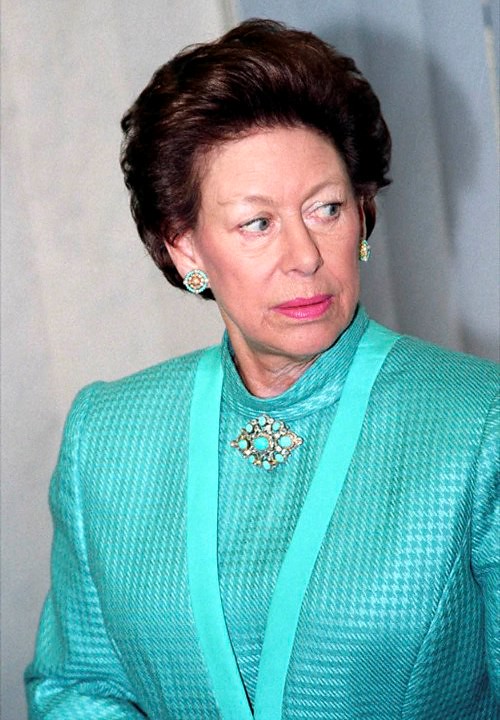
Divorce and Reputation
The eventual breakdown of Margaret’s marriage was scrutinized by the British tabloid press, foreshadowing the coverage of the later marital problems of Charles and Diana, Prince and Princess of Wales. In February 1976, paparazzi photos of Margaret vacationing on the Caribbean island of Mustique with Roddy Llewellyn, a landscape gardener 17 years her junior, were published in a tabloid newspaper. Margaret and Antony separated the next month and divorced in 1978. The scandal prompted parliamentary debates regarding whether Margaret should retain her civil list allowance and continue to represent the Queen. Margaret ultimately retained her income and royal duties.
Later Life and Death
Margaret never remarried and suffered from poor health later in life. She died in her sleep at the age of 71, following a series of strokes, at King Edward VII hospital in London, with her children at her side.

 Share on Facebook
Share on Facebook Share on X
Share on X Share by Email
Share by Email Share on Google Classroom
Share on Google Classroom
